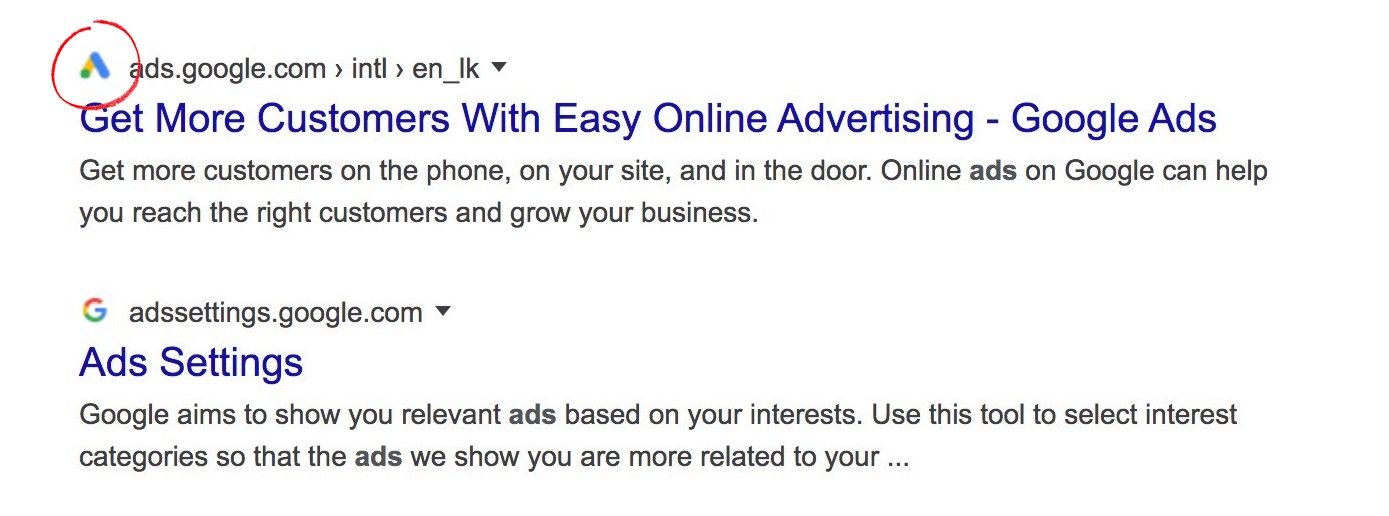How Google Tricked Us Into Clicking Ads
Google ran a psychology experiment on all of us, and it worked

Have you noticed that you’re clicking Google Ads more, without thinking about it? Google was thinking about it. They’ve put a lot of thought into tricking you, and it was a very simple change.
Update: since publishing this, Google has started ‘experimenting’ with rolling back this change. Some people will see it, some won’t. I, for example, no longer see the favicons in search.
Step 1: Add Logos To Everything
The first step seemed lame but harmless. Above each search result, they introduced a 16x16 pixel logo for the site. What’s called a favicon.

This adds little value to a search user and we quickly learned to ignore it. But oh, that was the point. Google wasn’t trying to improve search results, they were training us to ignore that little 16x16 spot. It was a Trojan horse. Beware of geeks bearing GIFs.
What Google is doing here is exploiting a very strong psychological phenomenon. A trick. I studied this in cognitive science, and they showed us this video in class to explain. In this 1999 experiment, you need to count the number of passes made by the players wearing white. Pay attention, it’s harder than it looks.
If you want to experience the experiment don’t scroll down yet…
OK.
So in this experiment, 50% of people don’t notice a gorilla walk in between the players. When Daniel Levitin showed us this as students, I didn’t notice the gorilla either. That’s the power of what psychologists call inattentional blindness.
Our brains are highly efficient. We cannot possibly process all the information in the world, so our brains discard useless information aggressively. In this case, the black players were useless, so my brain discarded them completely. When a black gorilla appeared, my brain also discarded that. Perhaps it also worked on you.
This is exactly what Google did with search results. They introduced something useless that your brain learned to ignore — the favicons. This is the Trojan Horse that you let into your brain. Then they opened the Trojan Horse, and let out the ads.
Step 2: Put ”Ads” In Your Blind Spot

Now look at the search results. Google has put the important word ‘Ad’ in the unimportant favicon spot — a spot your brain has been trained to ignore. This is effectively a blindspot, so you don’t even see the ads anymore. Like the gorilla thing, Google’s psychological experiment worked on me as well.
Since the change, I’ve clicked on a lot more ads, even when I really don’t want to. Usually, if I Google a company’s name, I click the free search result. Making companies pay for their own name is just extortion. In the past week, however, I’ve been clicking the ad. I just clicked an ad this morning. I never click ads, so this works. If I wasn’t writing this article I wouldn’t have even have noticed, I would have just thought I clicked the first result.

Here are the old and new search layouts so you can compare. You can also see all the historical design changes here.
Before, the little Ad icon meant something. If there was an icon at all, you knew it was an ad. Your brain was able to process this information quickly, at a scan. Now, however, Google has flooded the neurological zone with all kinds of icons. The Ad icon doesn’t stick out at all. As far as the human brain is concerned, it’s disappeared.
Honestly, well played. Google has fulfilled the legal requirement of labeling ads while making them psychologically invisible. They obviously have cognitive scientists on staff, they obviously knew about this undergraduate-level effect, and they’ve exploited it to make billions of dollars.
Step 3: Profit
Preliminary data shows that this simple change drives dramatically more click-throughs. Which means more money each time. In mature businesses like this, a 0.1% change in performance is a big deal. But this is much bigger than that.
Osmundson [Nordic Click] pulled data for four different clients…
For all four clients, the desktop click-through rates increased and ranged from 4% to 10.5%. (Digiday)
These effects are huge. Even if the effect is only 1%, it’s still huge. On a base of a hundred billion, we’re easily talking billions of dollars here. All from exploiting a simple psychological effect and 16x16 pixels of real estate.
Google is now effectively running invisible paid search results. They’re visible to the human eye, but invisible to the human brain. As a user I’m quite annoyed, but as a cognitive scientist I’m honestly impressed. They’ve just replicated a classic experiment across billions of people, and it works. And they’ve made a ton of money in the process.